Genus: Crataegus
Family: Rosaceae
Hawthorns are short, thorny trees that were once used to form thick hedges between pastures in Europe. The trees bloom once or twice a year and are covered with many small flowers. Hawthorns are in the Rose family and the fruit is a “pome” that looks like an apple or a rose hip. The fruits are edible but they have a bad taste and are generally only used for making alcohol. There are roughly 200 species of hawthorns and those species have hundreds of named varieties, making identification difficult.
Hawthorns have become a problem at Reed because birds and small mammals spread the seeds through the canyon, where the trees have become an invasive species. The college is trying to decrease the number of hawthorns as part of an ongoing canyon restoration.
Carriere Hawthorn
Scientific name: Crataegus x lavallei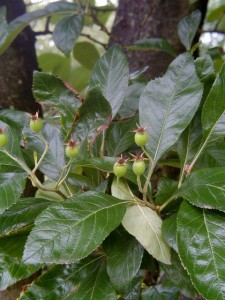
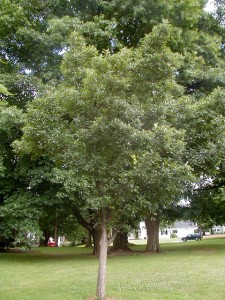 This hawthorn is more erect and open branching with less twiggy growth than other hawthorns. Its long toothed leaves are dark green and leathery, about 2-4 inches long. They turn reddish-brown after the first sharp frost and hang on well into winter. In the spring the tree has white flowers that are followed by loose clusters of very large orange to red fruit that persist into winter.
This hawthorn is more erect and open branching with less twiggy growth than other hawthorns. Its long toothed leaves are dark green and leathery, about 2-4 inches long. They turn reddish-brown after the first sharp frost and hang on well into winter. In the spring the tree has white flowers that are followed by loose clusters of very large orange to red fruit that persist into winter.
View tree page and map.English Hawthorn
Scientific name: Crataegus laevigata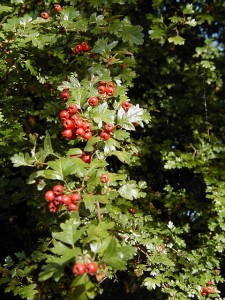
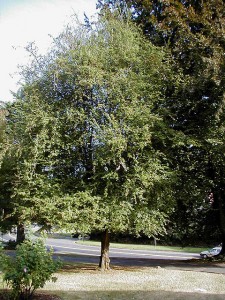 This tree is a deciduous native to Europe and North Africa. Some cultivars of this species have red and others have white flowers. Small red fruits remain on the tree throughout the winter unless the birds get them first. This is the May tree of England that produces May flowers.
This tree is a deciduous native to Europe and North Africa. Some cultivars of this species have red and others have white flowers. Small red fruits remain on the tree throughout the winter unless the birds get them first. This is the May tree of England that produces May flowers.
View tree page and map.Hawthorn
Scientific name: Crataegus monogyna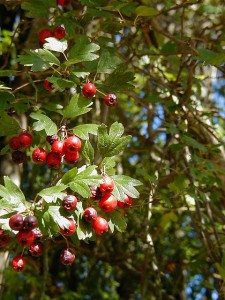
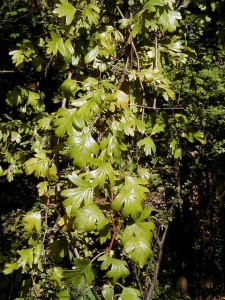 This is the most common hawthorn used for hedges and barriers in the English countryside. It grows in a tall, narrow shape (up to 30 ft. in height) and spreads 8 ft. wide. It has small leaves and small red berries.
Maps: not shown on maps but found in the Reed canyon
This is the most common hawthorn used for hedges and barriers in the English countryside. It grows in a tall, narrow shape (up to 30 ft. in height) and spreads 8 ft. wide. It has small leaves and small red berries.
Maps: not shown on maps but found in the Reed canyon
View tree page and map.